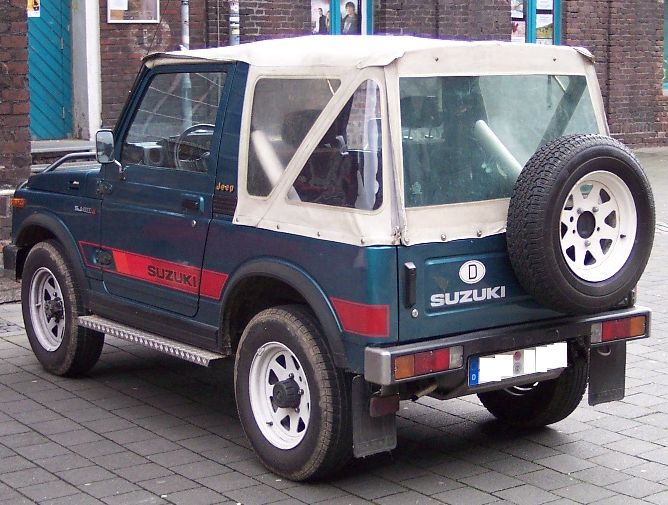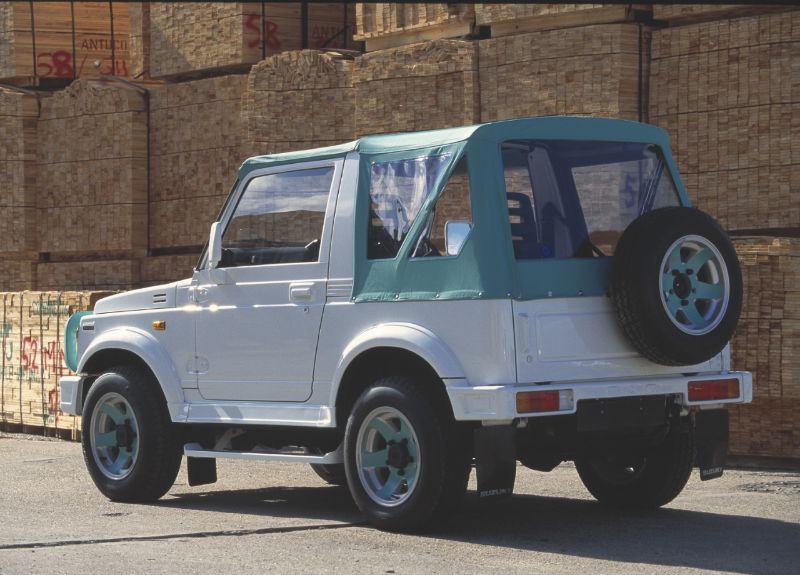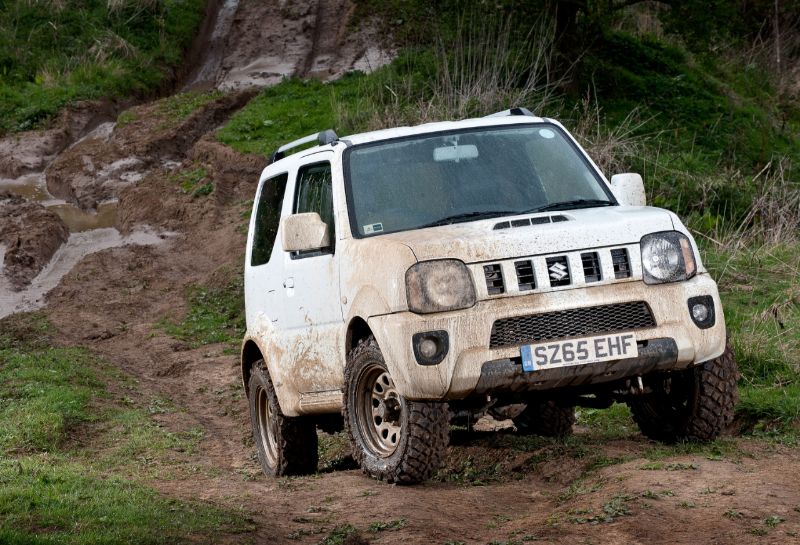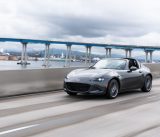
The Suzuki Samurai is a vehicle with a less than stellar reputation but plenty of rugged charm. The Suzuki Samurai is also known as the Jimny, specifically the Suzuki Jimny SJ40.
Before the Samurai

1979 Suzuki Jimny
The Suzuki Samurai arrived in 1985, but many experts point out that its history and influences began in 1967. The Jimny started as the HopeStar ON360 built by Hope Motor Company, a Japanese automaker. This auto had many Mitsubishi parts, and there are no clear figures to show how many units were produced before Suzuki acquired the company in 1968. Some place the figure at just 15 units.
After its takeover, Suzuki made some changes to what would eventually become the Samurai. This included replacing the engine with its own 359 cc unit that produced 25 horsepower. The goal was to help the Jimny qualify as a “kei car,” which was a lightweight class in Japan with lower insurance and tax rates. Over the years, Suzuki did grow the auto. It was not until the second generation arrived in 1981 that the Jimny began looking more like the Samurai that came to the United States in 1985.
Introducing the Samurai

Suzuki Samurai
The first Suzuki Samurai sold in the United States had 63 horsepower thanks to its 1.3-liter four-cylinder engine. The Samurai was appealing with its cheap price tag, off-the-road capabilities, and cute appearance.
A Less-Than-Stellar Reputation for Safety
In a 1988 review, Consumer Reports pointed out the ease with which the Suzuki Samurai rolled over in turns. The publication pointed out that this typically happened just when driving at quicker speeds that involved a fast direction change, like swerving. Even with the qualifiers, this review really hurt the vehicle’s reputation, leading to dramatically lower sales. Suzuki even sued but settled out of court after eight years. Eventually, Suzuki would fully pull out the Samurai from the market in 1995. It did not help Suzuki’s case that documents eventually surfaced showing the company indicated concerns over the Samurai’s narrow wheelbase that increased the rollover risk.
But Great Reputation for Off-Roading and Reliability
The poor reputation of the Samurai when it came to the risk of rollover led to its demise in the United States. However, it continued to excel in other markets. Drivers who have owned a Samurai regularly praised this SUV for its ability to tackle all sorts of terrain and put up with plenty of abuse without breaking. Reviews also regularly point out the vehicle’s longevity. Reviews indicate it was still running well after 10 or even 13 years, if not more.
Later Years

After sales of the Suzuki Samurai ended in the United States, they continued abroad. In other markets, it goes by Jimny, Katana, or Sierra. The United States missed out on the first major update for the SUV, which included an improved interior and coil springs. The 2018 Jimny just began its fourth generation. With each passing generation, its sophistication and power leveled up, evolving from its utilitarian roots.





